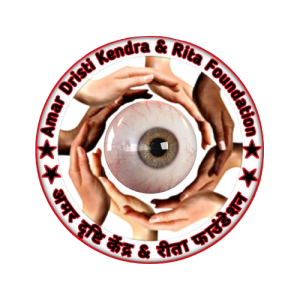Age-Related Macular Degeneration (AMD)
Introduction
Age-related macular degeneration (AMD) is a leading cause of vision loss in adults over 50. It affects the macula, a small region in the center of the retina responsible for sharp, central vision. AMD causes a gradual breakdown of the macula, leading to difficulties with tasks like reading, driving, and recognizing faces.
Anatomy
The eye is a complex organ that converts light into signals the brain interprets as vision. Here's a breakdown of the relevant parts:
- Retina: The light-sensitive layer at the back of the eye. It contains millions of photoreceptor cells called rods and cones. Rods function in low light, while cones provide color vision and detailed central vision.
- Macula: A small, specialized area within the retina responsible for sharp central vision.
- RPE (Retinal Pigment Epithelium): A layer of cells behind the retina that nourishes photoreceptor cells and removes waste products.
- Drusen: Tiny deposits that can accumulate under the macula as part of the aging process.
Types of AMD
There are two main types of AMD: dry AMD and wet AMD.
Dry AMD: This is the more common form, affecting about 85-90% of AMD cases. It progresses slowly over years. In dry AMD, drusen deposits accumulate under the macula, and the light-sensitive cells gradually deteriorate.
Wet AMD: This is a less common but more aggressive form, affecting about 10-15% of AMD cases. In wet AMD, abnormal blood vessels grow under the macula. These blood vessels can leak fluid or blood, damaging the macula and causing rapid vision loss.
Symptoms
- Blurred vision, especially in the center of the field of view
- Difficulty seeing in low light
- Distorted vision, such as straight lines appearing wavy
- Difficulty recognizing faces or colors
Risk Factors
- Age: AMD is most common in people over 50, with the risk increasing with age.
- Family history: Having a close relative with AMD increases your risk.
- Race: White people have a higher risk of AMD than other racial groups.
- Smoking: Smoking is a significant risk factor for AMD.
- Diet: A diet high in saturated fat and low in fruits and vegetables may increase the risk of AMD.
- Obesity: Obesity may be a risk factor for AMD.
- Sunlight exposure: Excessive exposure to ultraviolet (UV) light may increase the risk of AMD.
Diagnosis
An eye doctor can diagnose AMD through a comprehensive eye exam, including:
- Visual acuity test: Measures your ability to see at different distances.
- Amsler grid test: Helps detect central vision distortion.
- Dilated eye exam: Allows the doctor to examine the macula and retina for signs of AMD.
- Optical coherence tomography (OCT): Creates a detailed cross-sectional image of the retina to assess macular health.
Treatment
There is currently no cure for AMD. However, treatments can help slow the progression of the disease and preserve vision:
- Dry AMD:
- While there is no specific treatment for dry AMD, some research suggests that a diet rich in fruits, vegetables, and fish may be beneficial.
- Supplementation with specific vitamins and minerals, like lutein, zeaxanthin, vitamins C and E, and zinc, may also be helpful. However, discuss these with your doctor as they may not be suitable for everyone.
- Wet AMD:
- Anti-VEGF medications are the primary treatment for wet AMD. These medications are injected into the eye to block the growth of abnormal blood vessels.
- Laser therapy may be used in some cases to destroy abnormal blood vessels.
Prevention
While there is no guaranteed way to prevent AMD, certain lifestyle changes may help reduce the risk:
- Maintain a healthy diet: Eat plenty of fruits, vegetables, and fish.
- Don't smoke: Smoking is a significant risk factor for AMD. Quitting smoking is one of the best things you can do for your eye health.
- Maintain a healthy weight: Obesity may increase the risk of AMD.
- Protect your eyes from UV light: Wear sunglasses that block UVA and UVB rays.
- Regular eye exams: Schedule regular eye exams with your ophthalmologist to monitor your eye health and detect AMD early.
Living with AMD
AMD can significantly impact daily life. However, there are ways to manage the condition and maintain independence. Here are some resources that can help:
- Low vision rehabilitation: A specialist can teach you techniques and strategies to maximize your remaining vision




 Author - Admin
Author - Admin








No comments:
Post a Comment